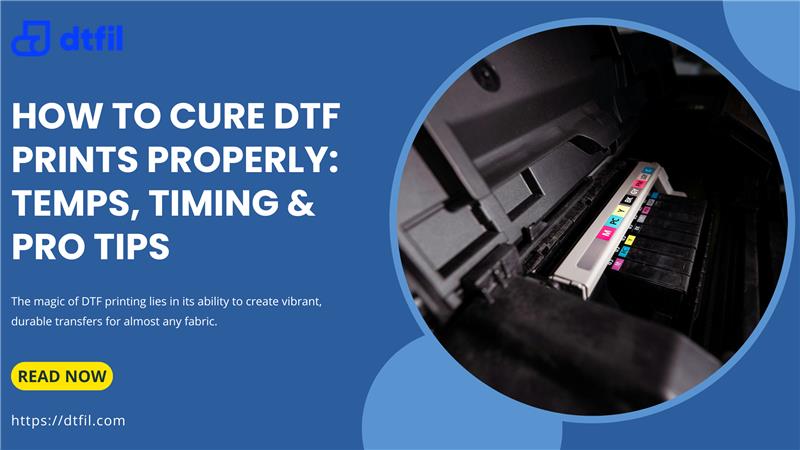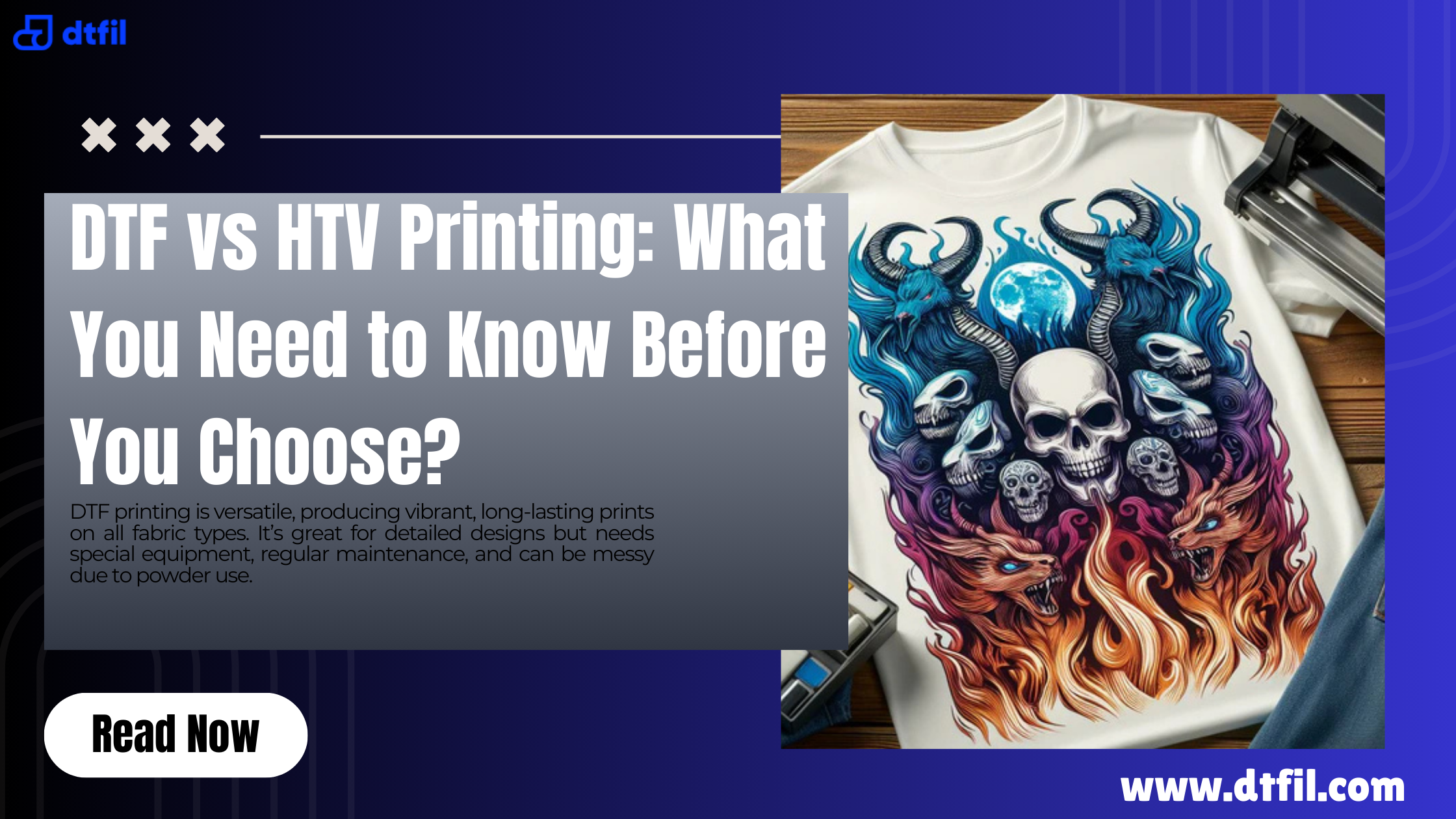New technologies that increase the efficiency, versatility, and quality of the results are continually emerging in the world of printing. UV DTF Transfers is one of the most recent innovations going viral and rightfully so. This method of printing has taken off with hobbyists and businesses alike finding it to be a unique way of printing and one which is the latest trend with custom designs.
Here in this blog, we’re going to tell you what is UV DTF Transfers and how they differ from traditional DTFs also we’re going to answer some of our frequently asked questions to help you understand why it’s a must-have in the printing world.
Definition of a UV DTF Transfer
Ultraviolet Direct-to-Film Transfers, or UV DTF Transfers for short, are the main topic of this article. The UV printing and transfer film process joins a UV printing system coupled with a thin transfer film to allow this printing process to create high-quality designs for a wide range of substrates. However, UV printing involves using ultraviolet light to cure the ink as the same is printed on the transfer film, giving piercingly good lasting designs that stick very precisely to to surface.
This is what sets UV DTF Transfers apart from other transfer options, the ink is cured on the fly meaning we can print crisp colors with more vibrancy, and more durability. The printed design is transferred onto almost any surface: glass, wood, metal, plastic, etc., via the transfer film serving as the medium. UV DTF is different from traditional printing, and unlike the latter, it does not need heat to transfer the design, good for heat-sensitive material.
Also Read: How to Print DTF Transfers
UV DTF Transfer vs. DTF Transfer
A common question people ask is how UV DTF Transfers differ from regular DTF (direct-to-film) transfers. While both methods involve transferring a printed design onto a surface using a film, there are some key differences between the two:

- Curing Process: DTF prints the design onto the film and then transfers it with heat. UV DTF means right after printing the ink is instantly cured using ultraviolet light so the design is immediately ready to go for transfer.
- Surface Versatility: DTF transfers are largely used on fabrics like t-shirts but UV DTF Transfers can be applied over other surfaces such as glass, ceramics, and plastics making it suitable for signage and such.
- Durability: UV DTF Transfers utilize a UV curing process that allows the creation of a stronger bond between ink and the transfer film creating a longer-lasting design that can’t be scratched, watered, and faded with time.
What are the Benefits of UV DTF Transfers?
There are many reasons why UV DTF Transfers have become the go-to choice for custom printing:

- Vibrant Colors: Since the ink is cured instantly by UV light, the colors stay vibrant and clear and yield high-quality designs, and they handle incredibly well on any surface.
- No Heat Required: Unlike traditional heat transfers, UV DTF Transfers don’t use heat to apply the design. That is perfect for plastics and other fabrics that would be damaged by high temperatures.
- Waterproof and Scratch-Resistant: Due to the UV curing process, the final transfer is very durable. The good news is it is waterproof and scratch-resistant, making it suitable for use on outdoor surfaces or frequently handled items.
- Versatility: The prime benefit of UV DTF Transfers over other transfer methods is that they will stick to many different surfaces such as on textiles, glass, and metal. Because of this, it is an excellent way to make wonderful custom home decor, promotional items, signage, etc.
- Eco-Friendly: UV curing, less energy, and requires fewer volatile organic compounds (VOCs) than typical printing processes making it a greener method.
Also Read: What Does DTF Transfer Mean?
Can You Use UV DTF for Shirts?
UV DTF Transfers can be applied to many surfaces, but they’re not used on fabric t-shirts. Although traditional DTF transfers or screen printing are the go-to way for printing on textiles, (because they’re flexible and they can take extensive stretching and washing over) for the most part there are no issues with durability. But it is far superior to UV DTF for custom printing on solid, non-porous surfaces like glass, metal, and plastic.
Is UV DTF Waterproof?
Yes! For this reason, the advantage of UV DTF Transfers is the water resistance. The design is waterproof and incredibly durable once the UV ink is cured onto the transfer film. UV DTF is the perfect choice for outdoor signage, drinkware, and any other product that may be exposed to moisture since this virtually eliminates the need to protect your print from the elements.
UV DTF transfers are becoming the hottest printing trend across the industry, due to its innovative technology and the many ways it can be applied. UV DTF is perfect for you if you are creating custom merchandise, promotional items, or one-of-a-kind home decor as it offers the highest quality solutions with glowing long-lasting designs.
If you’re interested in getting started with UV DTF Transfers, look no further than DTFIL. We offer a wide range of UV DTF supplies and printers that can help you create stunning custom designs with ease. Visit our website today to explore our products and elevate your printing game!
Also Read: What Kind of Printer Do I Need for DTF Transfers?
FAQs
What is the difference between UV DTF and DTF?
UV DTF is different than traditional DTF mainly based on curing process and the surface that it can be applied on. UV DTF transfers can be used on a lot of surfaces, like glass, plastic, and metal, and cured with Ultraviolet Light. On the other hand, when DTF transfers are used, the fabric is heated to complete the transfer process, instead of the paper.
How does UV DTF transfer work?
In this UV DTF transfer process, the design is printed on a special transfer film with UV inks. The ink is applied while the ink is being applied ultraviolet light is used to instantly cure (dry) the ink locking the colors in and creating a durable finish. Once the design is made it is easy to apply the printed film to the desired surface using bias, and is not heated.
How long does UV DTF last?
UV DTF Transfers are very durable and can last years depending on the surface that they are applied to and the use they get. The UV-cured ink is fading, scratching, and water-resistant so the design will last. For use on glassware or signage, you can have this transferred and rely on it to stay there for quite some time even after being handled a few times.
What are the advantages of UV DTF?
The advantages of UV DTF Transfers are their versatility, vibrant colors, and durability and they don’t need heat to apply. UV DTF Transfers are flexible while waterproof and scratch-resistant which makes them perfect for businesses wanting to make custom products and their ability to use UV DTF Transfers on a large range of surfaces is also great.
How to print UV DTF transfers?
To print UV DTF transfers, you need a UV printer that uses specialized inks. Simply print your design onto the transfer film, cure the ink with UV light, and then apply the film to your desired surface.








